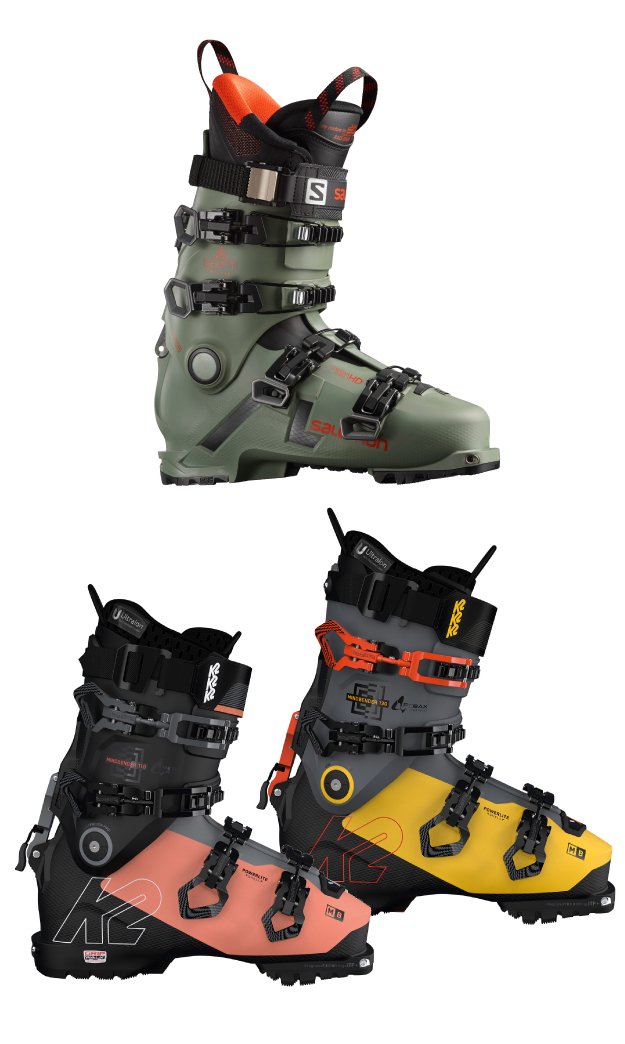THE KIT DOCTOR
Here to help with all your kit and equipment conundrums, the Ski Club’s Henry John brings his experience to bear on your questions
Today’s alpine boots will also see you over the ridge
What do you recommend as a hybridalpine/
touring boot?
Individual pairs of touring and downhill boots are too heavy when travelling by train and needing to save weight.
George, via information@skiclub.co.uk
Hybrid boots – a combination of touring and downhill technology–have come of age since Salomon first launched the pioneering QST Pro five years ago. There’s now a healthy range available for those looking for good quality alpine boots that will also see them over the ridge or even handle longer tours, as plastic and binding technology have come on leaps and bounds in this time. The Salomon SHIFT Pro is a direct descendent of the QST pioneer. Building directly from this experience, the entire SHIFT range, featuring bindings as well as boots, has created a solid foundation for the hybrid skier. Dalbello has struck out on a path of innovation in recent years–its latest offering is the Lupo MX120,boots that deliver touring capabilities with a more powerful alpine configuration and come in lighter than their Salomon SHIFT counterparts. Finally, there’s theK2 Mindbender, the sister boot to the excellent Mindbender all-mountain ski, and the only one oft hese three options actively marketed as a downhill hybrid, as opposed to a freeride hybrid. Whichever you chose, you must ensure binding compatibility, both with pin functionality and with Gripwalk technology rolling out across more all mountain and touring bindings.
I am looking for a new pair of piste skis that I can also use in race gates – what models can you
recommend?
Jonathan, via phone
There are two skis the Club has loved over the past couple of years. The first is the Rossignol R10, amore-up-to-date version of the R8 that was singled out as one of our favourite skis of 2020/21, with a powerful edge hold in longer turns and lots of manoeuvrability in shorter turns. I am a huge fan of the Head Supershape series, which, whilst boasting a slightly fatter waist than the Rossignol, features a hugely impressive short-turn ability, boosted by its incredible hourglass figure and KERS chip in the tail. Whilst this latter element may be the preserve of the marketing department at Head rather than the genuine input of Formula 1 technology, the Head is nevertheless a brilliantly flowing, easy-to-turn ski. A final word should go to the Exonde XO, one of the best piste skis I’ve had the good fortune to ski. Whilst on the surface it does not stand out in terms of shape or technology, this small Swiss company has created a light, stable, powerful and agile ski that will challenge any ski on the market.
PHOTO STEPH CANDE
I have very flat feet and always have problems with ankle pressure in ski boots
– what advice do you have when getting boots fitted?
Adam, via Ski+board online
Awkward pressure in ski boots is almost always a symptom of another issue, which you have noted here yourself – flat feet. This is caused by the arch collapsing, forcing the foot to expand forwards and sideways, and rolling the ankle inwards (an effect known as overpronation).We don’t typically notice this problem in everyday footwear, as our shoes are forgiving and flexible. However, in the hard plastic shell of a ski boot, it causes all sorts of problems. Your first step is to create a custom moulded foot bed for your boots, which any reputable boot fitter should be able to offer. This has several effects on the foot: it will support the arch, which will rein in forward and sideways expansion of the foot as well as reduce the pronation you experience, and it will lock the foot in the right place in the boot. This former element should go a long way to eliminating your issues. If it does not, now that your foot is locked in the right part of the boot, your boot fitter can amend the boot, confident that any adjustments they make will work against the right part of the foot.






